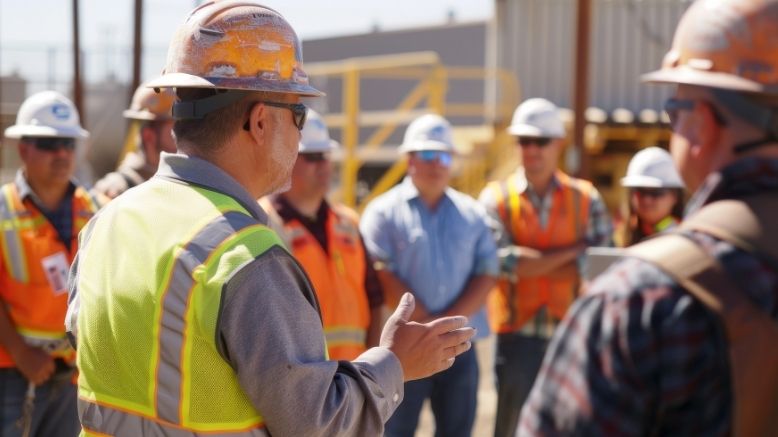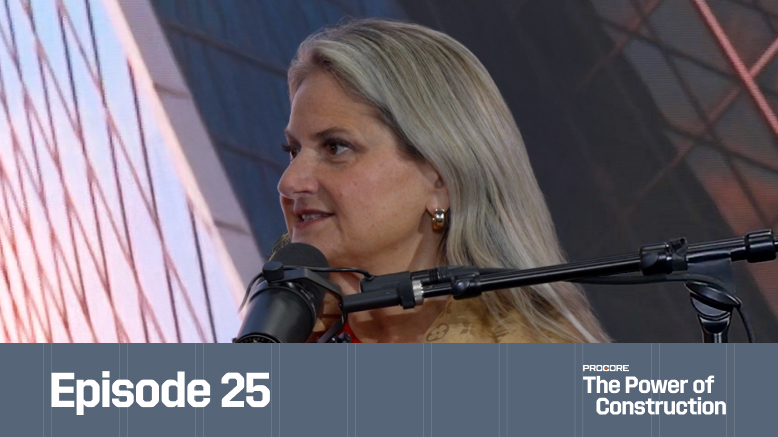— 7 min read
A Guide to Construction Engineering Management


Last Updated Oct 22, 2025

Fernando Munoz
Product Designer
Fernando is a Product Designer at Procore. Previously, he worked as a Project Engineer and Project Manager at JE Dunn Construction. He also spent 5+ years as a fabrication and field engineer for CB&I, a global designer and builder of industrial storage facilities. Fernando holds a BS in Industrial Engineering from Louisiana State University and an MS in Civil Engineering, Construction Engineering & Project Management from the University of Texas at Austin. He lives in Austin, TX.

Kristen Frisa
Contributing Writer
111 articles
Kristen Frisa is a contributing writer for Procore. She also contributes to a variety of industry publications as a freelance writer focused on finance and construction technology. Kristen holds a Bachelor of Arts in Philosophy and History from Western University, with a post-graduate certificate in journalism from Sheridan College. She lives in Ontario, Canada.
Last Updated Oct 22, 2025

Construction engineering managers combine two key skill sets into a single role: They blend the technical expertise needed to build safe, feasible structures with the organizational skills required to get the work done.
This article covers the role of the construction engineering manager — including typical projects, key responsibilities and common career paths.
Table of contents
What is construction engineering management?
Construction engineering management (CEM) combines the principles of two recognized roles in construction: engineers and managers.
Construction engineers are involved in much of the building process from design through inspections, using theoretical and technical knowledge to make sure projects are constructed safely. Managers oversee projects, organizing teams and making sure they have what they need to get the job done.
The CEM role applies technical and scientific knowledge to the oversight of the building process, helping bring conceptual designs to life.
The terms construction engineer and project engineer are sometimes used interchangeably. On larger projects, construction engineers may be assigned a specific set of contractors to oversee, like those for the interior, the building envelope or the mechanical and electrical systems.
Project engineers are usually assigned a scope of work that they supervise on a day-to-day basis, essentially assisting the superintendent. The super is the main point of contact in the field and primarily responsible for making sure that all work is completed on time, in the correct sequence and meets the project's quality requirements.
Project engineers also help the project manager who is in charge of the financials of the project and monitoring the progress. So the project engineer really is a connection between the field and the office and the connection responsible to communicate about specific scopes of work.

Fernando Munoz
Product Designer
Procore
Common Projects for Construction Engineering Managers
CEMs work on a wide range of project types and may have different responsibilities depending on the characteristics of each.
Heavy Civil
Heavy construction projects — like wastewater facilities and bridges — require CEMs to bring significant expertise to the table. They are involved in planning and designing projects, assessing their constructability, overseeing environmental assessments, managing construction teams and external contractors and recommending and administering project budgets.
Project management skills are also essential in this area for coordinating with municipal authorities, keeping the project compliant with environmental regulations and managing the complex logistics of construction in populated areas.
Airports
Airport projects are generally large-scale, complex projects that mix runways, terminals and support facilities. They demand advanced engineering capabilities to design systems that accommodate high volumes of aircraft and passengers.
Effective project management requires coordination between aviation authorities, safety compliance and the logistical challenges of construction in operational airports.
Aerospace Manufacturing Construction
Aerospace manufacturing construction involves building facilities that produce aircraft components and technologies. These projects require intricate engineering designs to support precise manufacturing processes.
Project management involves coordinating with aerospace engineers and ensuring that the facilities meet stringent safety and quality standards.
Agricultural Food Processing Construction
These projects require a strong understanding of mechanical and industrial engineering to design systems that maximize productivity, integrate control points and meet health and safety regulations.
Commercial Construction
In office and residential complex construction, CEMs bring architectural and structural engineering expertise to design buildings that are both functional and aesthetically pleasing. They use management expertise to oversee construction schedules, manage budgets and coordinate between many contractors and stakeholders.
Electrical System Design
CEMs specializing in electrical system design work on projects that involve planning and implementing power distribution networks and electrical systems for buildings. Construction engineers use their expertise to contribute to planning and building electrical components that meet safety and efficiency standards.
CEMs also coordinate with other engineering disciplines and contractors to integrate electrical systems into the overall project design, budget and timelines.
HVAC and Mechanical Design
In HVAC and mechanical design projects, CEMs use their expertise to design and oversee the construction of systems that provide comfortable and energy-efficient environments that regulate temperature, humidity and air quality.
Responsibilities of a Construction Engineering Manager
While no two days are alike, a construction engineering manager handles several common tasks throughout a project’s lifecycle.
Surveying the Jobsite
Before construction begins, CEMs conduct detailed surveys of the jobsite to assess the terrain, gather environmental data and identify potential challenges. They work with surveyors and geotechnical engineers to take accurate measurements and conduct soil analyses.
This information informs the design and logistical planning, ensuring all site aspects are considered before work begins.
Assembling a Team of Engineers
An important responsibility of CEMs is assembling a team of specialized engineers tailored to the needs of the project. This involves identifying the required expertise, such as structural, electrical or mechanical engineering, and recruiting professionals with the necessary skills.
CEMs must also create a collaborative working environment so team members can communicate effectively and work toward common goals.
Touring the Site
Once construction has started, CEMs regularly tour the site to monitor progress, identify issues and make sure work aligns with project plans.
These tours provide an opportunity to engage directly with the construction crew, address any concerns and make real-time adjustments to strategies or schedules.
By being present on-site, CEMs gain firsthand insights into the project's status and can make informed decisions to keep it on track.
Developing the Project Strategy
Developing a comprehensive project strategy involves detailed planning of timelines, resource allocation and risk management. This strategic plan serves as a roadmap for the entire project, outlining objectives, milestones and deliverables.
CEMs consider various factors such as budget constraints, regulatory requirements and stakeholder expectations to craft a robust strategy.
Managing Operations
CEMs manage day-to-day operations so construction activities proceed smoothly and efficiently. This involves coordinating with contractors, suppliers and team members to align schedules and workflows. Effective operations management requires attention to detail and the ability to quickly resolve any issues that arise, such as supply chain delays or labor shortages.
Overseeing Cost Control
It falls to the CEM to monitor expenditures so the project remains financially viable. This involves developing detailed budgets, tracking spending and implementing cost-saving measures without compromising quality. CEMs must also anticipate potential financial risks and adjust plans accordingly to prevent cost overruns.
Supervising Structural Design
CEMs supervise the structural design process so engineering solutions meet safety standards and project specifications. They review design plans, consult with structural engineers and make sure the project meets building codes and regulations. This supervision is key to delivering safe and reliable structures.
Implementing Safety Regulations
CEMs are responsible for implementing and monitoring safety regulations throughout the construction process. This includes developing safety plans, conducting regular safety audits and training workers on best practices.
CEMs must also respond swiftly to any safety incidents, conducting investigations and implementing corrective actions. By prioritizing safety, they protect workers and reduce the risk of accidents.
Identifying and Mitigating Risks
CEMs work to identify and mitigate risks proactively to prevent delays and disruptions. They search for potential risks early in the project, such as environmental challenges or supply chain issues, and develop contingency plans for the most impactful or likely scenarios.
How to Become a Construction Engineering Manager
Aspiring construction engineering managers often begin by earning a bachelor's degree in construction management, civil engineering or a related field.
After graduation, they gain hands-on experience by working in other construction roles, such as project engineer or site supervisor.
Professionals looking to become CEMs should focus on building both their technical knowledge and their managerial skills.
Acquiring certifications like the Project Management Professional (PMP) or the Professional Engineer (PE) can help candidates gain skills. Many CEMs also pursue a master's degree in construction management or business administration to further refine their leadership and project management capabilities.
With sufficient experience and a proven track record of successful project delivery, professionals can transition into managerial roles.
Stay updated on what’s happening in construction.
Subscribe to Blueprint, Procore’s free construction newsletter, to get content from industry experts delivered straight to your inbox.

The Future of Construction Engineering Management
As technology becomes more integrated into construction practices, the role of the construction engineering manager is becoming essential to seamless project execution.
Construction engineering management is poised for growth as the demand for skilled managers who can bridge the gap between design and engineering continues to rise. The integration of digital tools such as Building Information Modeling (BIM), drones and 3D printing will improve project efficiency and accuracy, allowing CEMs to manage projects more effectively.
Modern CEMs can leverage advanced technologies, including AI and real-time monitoring tools, to handle time-consuming tasks like project management and data analysis. This technological integration allows them to focus more on strategic development and implementation.
The profession is positioned for growth as companies seek skilled managers to improve communication, precision and strategic planning.
Was this article helpful?
Thank you for your submission.
0%
0%
You voted that this article was . Was this a mistake? If so, change your vote
Scroll less, learn more about construction.
Subscribe to The Blueprint, Procore’s construction newsletter, to get content from industry experts delivered straight to your inbox.
By clicking this button, you agree to our Privacy Notice and Terms of Service.
Thank you!
You’re signed up to receive The Blueprint newsletter from Procore. You can unsubscribe at any time.
Categories:
Written by

Fernando Munoz
Product Designer | Procore
Fernando is a Product Designer at Procore. Previously, he worked as a Project Engineer and Project Manager at JE Dunn Construction. He also spent 5+ years as a fabrication and field engineer for CB&I, a global designer and builder of industrial storage facilities. Fernando holds a BS in Industrial Engineering from Louisiana State University and an MS in Civil Engineering, Construction Engineering & Project Management from the University of Texas at Austin. He lives in Austin, TX.
View profile
Kristen Frisa
Contributing Writer | Procore
111 articles
Kristen Frisa is a contributing writer for Procore. She also contributes to a variety of industry publications as a freelance writer focused on finance and construction technology. Kristen holds a Bachelor of Arts in Philosophy and History from Western University, with a post-graduate certificate in journalism from Sheridan College. She lives in Ontario, Canada.
View profileExplore more helpful resources

Defending Against Financial & Legal Risks on Megaprojects
The construction industry has seen marked growth in megaprojects. Some experts classify any project over $500 million as a megaproject, while others argue that the build needs to be $1...

Unlocking Project Intelligence: Moving from Raw Data to Actionable Insights
The construction industry faces a wide range of challenges, from ongoing labor shortages to frequent cost overruns. But some the biggest hurdles all stem from unpredictability. The general contractors (GCs)...

Who is accountable for innovation in construction?
Everyone says construction needs to innovate—but no one agrees on who’s actually responsible for making it happen. Is it the owner? The builders? The tech vendor? Or is innovation everyone’s...

Integrated Project Delivery in Practice: A Framework for Collaboration
On construction projects, traditional delivery methods put different stakeholders in their own silos. While the design team feeds drawings and specifications to the general contractor (GC), the GC’s expertise in...
Free Tools
Calculators
Use our calculators to estimate the cost of construction materials for your next project.
Templates
Find a template to help you with your construction project tasks.
Material Price Tracker
Get the latest U.S. retail prices and view historical trends for common building materials.
Glossary
Explore key terms and phrases used in the industry.
